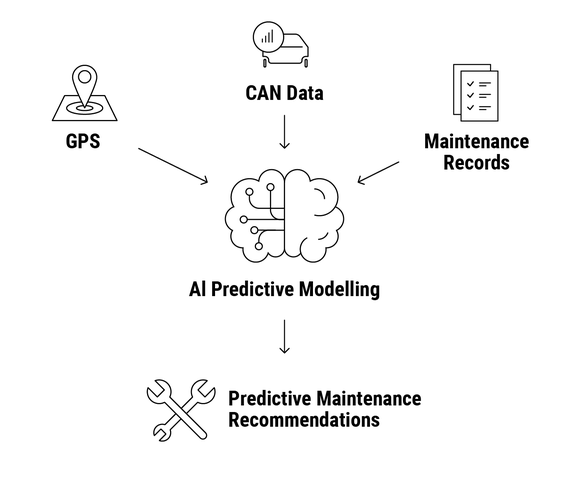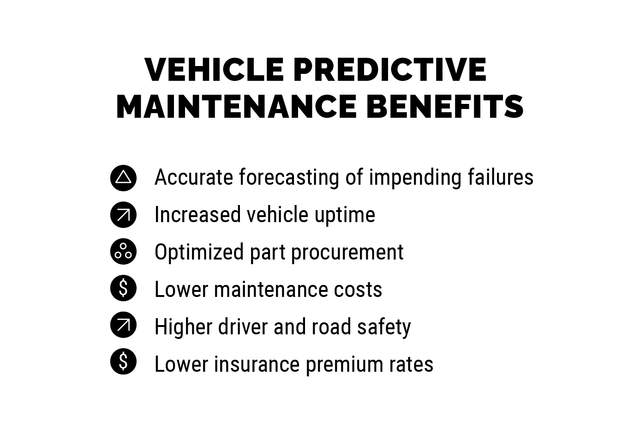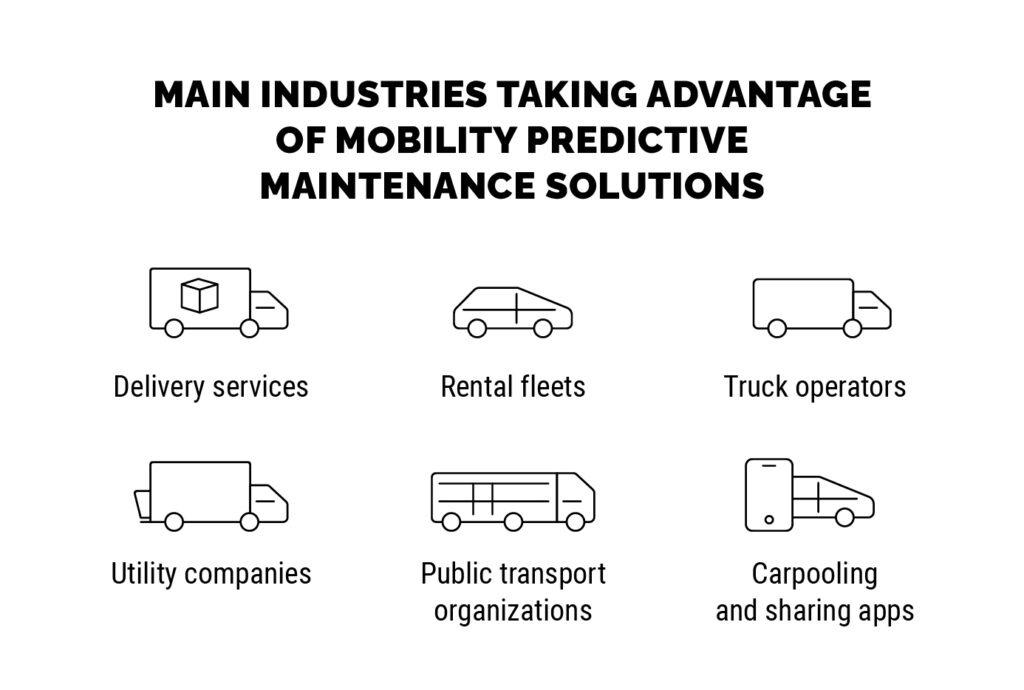Why time-based maintenance belongs to the past
Coming back to our traumatic road event, situations like this are common when the traditional approach to vehicle maintenance is applied. By traditional, we mean maintenance based on mileage or, worse—estimated mileage.
Since individual driving style heavily impacts a car’s tear and wear, it is extremely challenging to accurately predict the lifetime of car parts using this method, which considers the same, generic metric, regardless of how someone drives. As a result, many issues occur that impact individual drivers, courier and transport services, car rental and sharing operators, and fleet managers. These include:
- Reduced car lifespan. Unexpected or repeated failures of vehicle components naturally shorten the car’s lifespan, resulting in lower residual value, higher costs, and greater waste.
- Unnecessary maintenance. For fleets, every hour of vehicle downtime translates into a loss. This is especially true when a car is fully operational or only needs a minor fix when it goes out of service for a day or more because of the time-based scheduled maintenance.
- Higher costs. The above factors combined generate higher spending on the car, its parts, and repairs. From unplanned downtime, through inefficient use of car parts, to higher insurance rates, relying on traditional maintenance schedules can incur significant (and unnecessary) costs, which could have been avoided by applying a modern predictive approach.
- Greater road hazards. Time-based maintenance also has another major flaw—it leaves room for failure between fixed inspections. Since no two drivers (or automobiles) are alike, the impact of their driving style on component wear can be extremely different. The implications of these differences may, at times, lead to tragic consequences.
Benefits of predictive maintenance for fleets and drivers
As opposed to traditional preventive maintenance techniques, predictive maintenance software considers numerous factors to infer the time to the next maintenance and accurately assess vehicle wear.
Instead of focusing solely on time estimates and the number of miles, it factors in the vehicle, driver, and contextual information (weather conditions, traversed routes, road conditions, past events, etc.). The result is reliable, fact-based insights into the actual vehicle wear and the factors that affect it. As a result:
- Maintenance and repairs can be carried out as required by the vehicle’s exact condition or its components.
- Constant monitoring of parts’ conditions helps minimize unanticipated failures and their impact and cost.
- This, in turn, directly reduces vehicle downtime and the occurrence of vehicle recalls.
- Conducting maintenance repairs only when required means limiting over-maintenance and no-defect-found cases.
- Moreover, reliable predictive maintenance solutions for car fleets are fully scalable, offering insights into the health of a single car, or an entire fleet, no matter how big.
In addition to these “standard” benefits, vehicle predictive maintenance solutions offer an unlimited number and variety of use cases they serve. Their sophistication depends only on one’s imagination and the data sets available.
For example, a car manufacturer or a fleet rental company may leverage the insights from predictive analytics to build a customer-facing app showing the current condition of a vehicle. Or by integrating car maintenance data into the systems, road assistance companies can better prioritize interventions and provide support faster and more efficiently.










